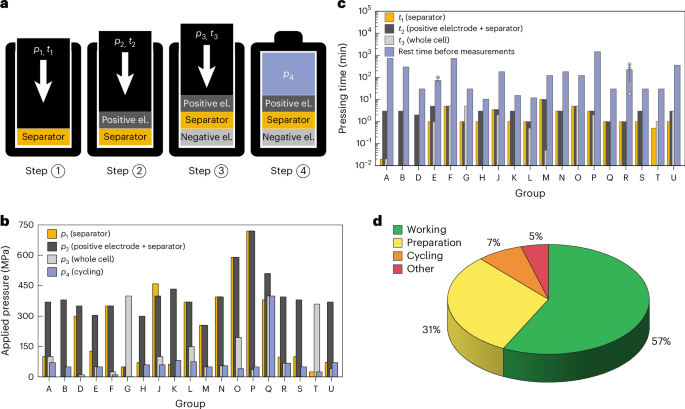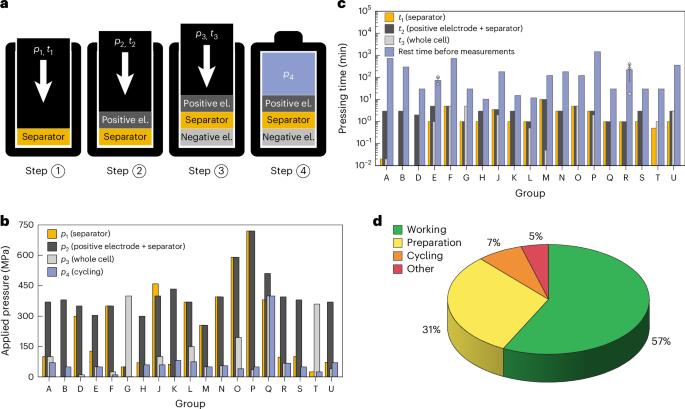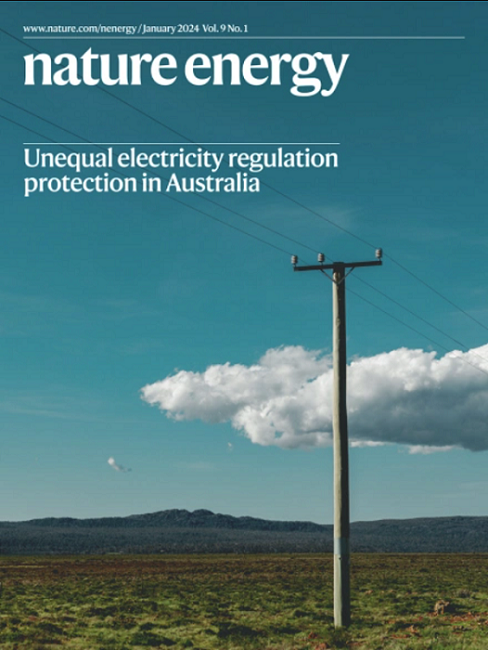全固态电池性能再现性基准测试
IF 49.7
1区 材料科学
Q1 ENERGY & FUELS
引用次数: 0
摘要
由于缺乏标准化的设置和组装参数,人们对全固态电池电池循环性能的实验室间可比性和可重复性知之甚少。本研究通过向 21 个研究小组提供市售电池材料--正极为 LiNi0.6Mn0.2Co0.2O2,固态电解质为 Li6PS5Cl,负极为铟,来量化这种可变性的程度。每个小组都被要求使用自己的电池组装方案,但要遵循特定的电化学方案。结果显示,组装和电化学性能存在很大差异,包括加工压力、加压持续时间和铟锂比的不同。尽管如此,初始开路电压为 2.5 和 2.7 V vs Li+/Li,仍能很好地预测使用这些电活性材料的电池能否成功循环。我们提出了一套报告全固态电池循环结果的参数,并主张报告一式三份的数据。本文章由计算机程序翻译,如有差异,请以英文原文为准。


Benchmarking the reproducibility of all-solid-state battery cell performance
The interlaboratory comparability and reproducibility of all-solid-state battery cell cycling performance are poorly understood due to the lack of standardized set-ups and assembly parameters. This study quantifies the extent of this variability by providing commercially sourced battery materials—LiNi0.6Mn0.2Co0.2O2 for the positive electrode, Li6PS5Cl as the solid electrolyte and indium for the negative electrode—to 21 research groups. Each group was asked to use their own cell assembly protocol but follow a specific electrochemical protocol. The results show large variability in assembly and electrochemical performance, including differences in processing pressures, pressing durations and In-to-Li ratios. Despite this, an initial open circuit voltage of 2.5 and 2.7 V vs Li+/Li is a good predictor of successful cycling for cells using these electroactive materials. We suggest a set of parameters for reporting all-solid-state battery cycling results and advocate for reporting data in triplicate. More transparent protocol reporting and comprehensive battery cell data are needed. Twenty-one research groups joined forces to assess solid-state battery performance and found considerable differences in assembly protocols that cause variable results.
求助全文
通过发布文献求助,成功后即可免费获取论文全文。
去求助
来源期刊

Nature Energy
Energy-Energy Engineering and Power Technology
CiteScore
75.10
自引率
1.10%
发文量
193
期刊介绍:
Nature Energy is a monthly, online-only journal committed to showcasing the most impactful research on energy, covering everything from its generation and distribution to the societal implications of energy technologies and policies.
With a focus on exploring all facets of the ongoing energy discourse, Nature Energy delves into topics such as energy generation, storage, distribution, management, and the societal impacts of energy technologies and policies. Emphasizing studies that push the boundaries of knowledge and contribute to the development of next-generation solutions, the journal serves as a platform for the exchange of ideas among stakeholders at the forefront of the energy sector.
Maintaining the hallmark standards of the Nature brand, Nature Energy boasts a dedicated team of professional editors, a rigorous peer-review process, meticulous copy-editing and production, rapid publication times, and editorial independence.
In addition to original research articles, Nature Energy also publishes a range of content types, including Comments, Perspectives, Reviews, News & Views, Features, and Correspondence, covering a diverse array of disciplines relevant to the field of energy.
 求助内容:
求助内容: 应助结果提醒方式:
应助结果提醒方式:


